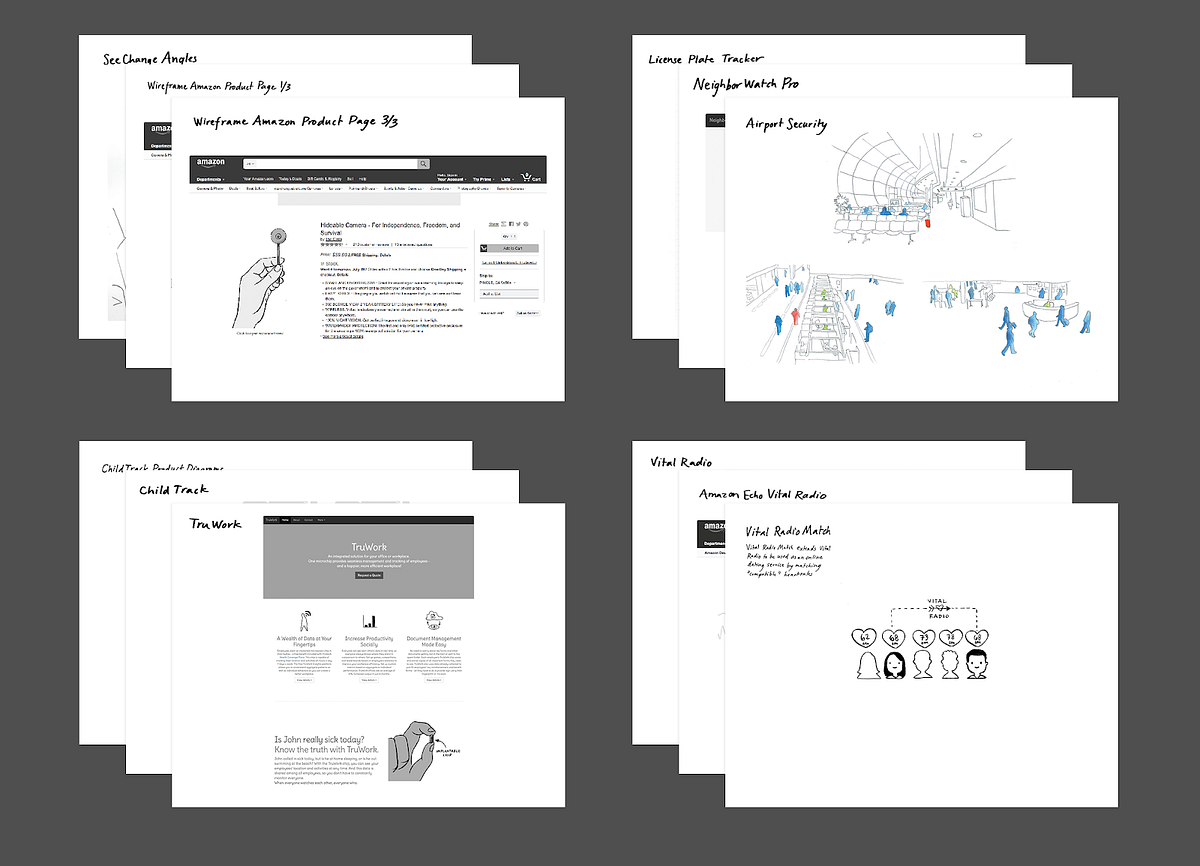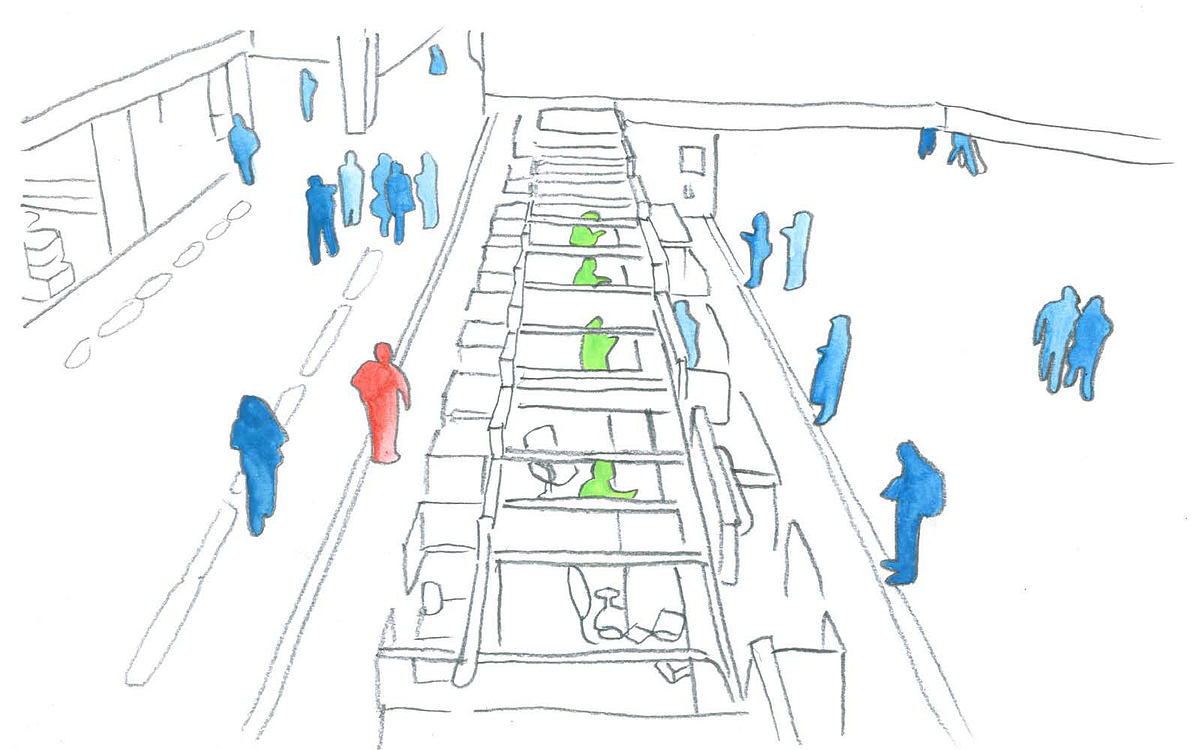From some recent conversations that I’ve had, I’ve been reflecting on what I might put on a reading list or syllabus to try to introduce someone to HCI perspectives on “values in design” and thought I’d put them together here! Some of this draws on the syllabus from “Technology and Delegation,” the Berkeley School of Information graduate course I helped teach with Deirdre Mulligan for a couple years.
These are predominantly pieces that I’ve found useful for my own thinking, or useful in a teaching context. As such, it’s a necessarily partial list. So thoughts/feedback/additions welcome – feel free to reach out at ryw9 {at} berkeley.edu
Introducing Values in Design
Some higher level and survey pieces to orient ourselves. (I’m assuming that people have already bought into the idea that technologies are not neutral. If not, I might point to Madeleine Akrich’s “The De-Scription of Technical Objects” or Langdon Winner’s “Do Artifacts Have Politics?” as intro pieces that point to the ways technical artifacts can be enrolled in promoting certain values and politics).
- Cory Knobel and Geoffrey C. Bowker. 2011. Values in design. Communications of the ACM 54, 26. https://doi.org/10.1145/1965724.1965735
- Helen Nissenbaum. 2001. How computer systems embody values. Computer 34, 3: 120–119. https://doi.org/10.1109/2.910905
- Katie Shilton. 2018. Values and Ethics in Human-Computer Interaction. Foundations and Trends® in Human–Computer Interaction 12, 2: 107–171. https://doi.org/10.1561/1100000073
What Are Values?
What are values? How are they viewed in different disciplines? Ranging from the more universal views of human rights, to more situated and contextual perspectives, to the law’s distinction between substantive and procedural values.
- United Nations. Guiding principles on business and human rights: implementing the United Nations” protect, respect and remedy” framework. UN. pp. 13-22
- Christopher A. Le Dantec, Erika Shehan Poole, and Susan P. Wyche. 2009. Values as lived experience: Evolving value sensitive design in support of value discovery. In Proceedings of the 27th international conference on Human factors in computing systems – CHI 09, 1141. https://doi.org/10.1145/1518701.1518875
- Nassim JafariNaimi, Lisa Nathan, and Ian Hargraves. 2015. Values as Hypotheses: Design, Inquiry, and the Service of Values. Design Issues 31, 4: 91–104. https://doi.org/10.1162/DESI_a_00354
- Koops, Bert-Jaap. “Criteria for Normative Technology: An Essay on the Acceptability of ‘Code as Law’ in Light of Democratic and Constitutional Values.” REGULATING TECHNOLOGIES, Brownsword & Yeung, eds (2007): 157-174. (Sections 4-7)
Conceptualizing the Values Problem
There are lots of different ways we might think about “cutting the cake” of a given values problem. We can look at the same problem space from lots of perspectives using different methods. These papers provide some tools and frameworks to help us think about different approaches to the problem space.
- Katie Shilton, Jes A. Koepfler, and Kenneth R. Fleischmann. 2014. How to see values in social computing: Methods for Studying Values Dimensions. In Proceedings of the 17th ACM Conference on Computer Supported Cooperative Work & Social Computing (CSCW ’14), 426–435. https://doi.org/10.1145/2531602.2531625
- Deirdre K. Mulligan, Colin Koopman, and Nick Doty. 2016. Privacy is an essentially contested concept: a multi-dimensional analytic for mapping privacy. Philosophical Transactions of the Royal Society A: Mathematical, Physical and Engineering Sciences 374, 2083. https://doi.org/10.1098/rsta.2016.0118
- Deirdre K. Mulligan, Joshua A. Kroll, Nitin Kohli, and Richmond Y. Wong. 2019. This Thing Called Fairness: Disciplinary confusion realizing a value in technology. Proceedings of the ACM on Human-Computer Interaction 3, CSCW: 1–36. https://doi.org/10.1145/3359221
User Centered Design
A brief overview of how user and human centered design has thought about human actions historically, as well as some contemporary examples of human centered design in products and services.
- Donald A. Norman. 1988. The Psychopathology of Everyday Things, Chapter 1 in The Design of Everyday Things. Basic Books, New York.
- IDEO’s Human Centered Design Kit Methods
- Public Policy Lab’s methods page, and skim some of their case studies.
Value Sensitive Design
VSD methods can be seen as an attempt to broaden the purview of user & human centered design to explicitly consider social values in the design process.
- Batya Friedman, Peter H. Kahn, and Alan Borning. 2008. Value Sensitive Design and Information Systems. In The Handbook of Information and Computer Ethics, Kenneth Einar Himma and Herman T. Tavani (eds.). John Wiley & Sons, Inc., 69–101. https://link.springer.com/chapter/10.1007/978-94-007-7844-3_4
- Batya Friedman, David G. Hendry, and Alan Borning. 2017. A Survey of Value Sensitive Design Methods. Foundations and Trends® in Human–Computer Interaction 11, 2: 63–125. https://doi.org/10.1561/1100000015
- Batya Friedman and David Hendry. 2012. The envisioning cards: a toolkit for catalyzing humanistic and technical imaginations. In Proceedings of the 2012 ACM annual conference on Human Factors in Computing Systems (CHI ’12), 1145–1148. https://doi.org/10.1145/2207676.2208562
Critically Oriented Design Approaches
Some design approaches use design practices towards other ends than “solving problems”, such as surfacing and re-framing problems, asking questions, or articulating alternative social and technical configurations of the world.
- Bill Gaver and Heather Martin. 2000. Alternatives: exploring information appliances through conceptual design proposals. Proceedings of the SIGCHI conference on Human Factors in Computing Systems (CHI ’00): 209–216. https://doi.org/10.1145/332040.332433
- Phoebe Sengers, Kirsten Boehner, Shay David, and Joseph Jofish Kaye. 2005. Reflective Design. In 4th decennial conference on Critical computing: between sense and sensibility (CC ’05), 49–58. https://doi.org/10.1145/1094562.1094569
- Anthony Dunne and Fiona Raby. 2013. Beyond Radical Design? Chapter 1 in Speculative Everything. The MIT Press, Cambridge, Massachusetts.
- Matt Malpass. 2016. Critical Design Practice: Theoretical Perspectives and Methods of Engagement. The Design Journal 19, 3: 473–489. https://doi.org/10.1080/14606925.2016.1161943
- Karin Hansson, Laura Forlano, Jaz Hee Jeong Choi, Carl Disalvo, Teresa Cerratto Pargman, Shaowen Bardzell, Silvia Lindtner, and Somya Joshi. 2018. Provocation, conflict, and appropriation: The role of the designer in making publics. Design Issues 34, 4: 3–7. https://doi.org/10.1162/desi_a_00506
What Does it Mean to Use “Design”?
After the previous sections, we might reflect a bit on the politics and knowledge claims involved in using different types of design practices. And reflect on when we might turn to other mechanisms and practices beyond design.
- Christo Sims. 2017. The Politics of Design, Design as Politics. In The Routledge Companion to Digital Ethnography, Larissa Hjorth, Heather Horst, Anne Galloway and Genevieve Bell (eds.). Routledge, New York, 439–447. http://quote.ucsd.edu/sims/files/2017/02/Sims-2017-The-Politics-of-Design-Design-as-Politics.pdf
- Lilly Irani. 2018. “Design Thinking”: Defending Silicon Valley at the Apex of Global Labor Hierarchies. Catalyst. https://doi.org/10.28968/cftt.v4i1.29638
- Richmond Y. Wong and Deirdre K. Mulligan. 2019. Bringing Design to the Privacy Table: Broadening “Design” in “Privacy by Design” Through the Lens of HCI. In CHI Conference on Human Factors in Computing Systems (CHI 2019). https://doi.org/10.1145/3290605.3300492
- Eric P.S. Baumer and M. Six Silberman. 2011. When the implication is not to design (technology). In Proceedings of the SIGCHI Conference on Human Factors in Computing Systems (CHI ’11), 2271. https://doi.org/10.1145/1978942.1979275
Incorporating Stakeholders
What are different ways we (as researchers, designers, community members, etc.) engage with other stakeholders?
- Meg Young, Lassana Magassa, and Batya Friedman. 2019. Toward inclusive tech policy design: a method for underrepresented voices to strengthen tech policy documents. Ethics and Information Technology 21, 2: 89–103. https://doi.org/10.1007/s10676-019-09497-z
- Diverse Voices Guide: http://techpolicylab.uw.edu/news/diverse-voices-guide/
- Lilly C Irani and M. Six Silberman. 2013. Turkopticon: Interrupting worker invisibility in amazon mechanical turk. In Proceedings of the SIGCHI Conference on Human Factors in Computing Systems (CHI ’13), 611. https://doi.org/10.1145/2470654.2470742
- R. Stuart Geiger. 2016. Bot-based collective blocklists in Twitter: the counterpublic moderation of harassment in a networked public space. Information, Communication & Society 19, 6: 787–803. https://doi.org/10.1080/1369118X.2016.1153700
Values Case Studies
Privacy
- Batya Friedman, Ian Smith, Peter H. Kahn, Sunny Consolvo, and Jaina Selawski. 2006. Development of a Privacy Addendum for Open Source Licenses: Value Sensitive Design in Industry. In Proceedings of the 8th international conference on Ubiquitous Computing (UbiComp ’06), 194–211. https://doi.org/10.1007/11853565_12
- Pam Briggs and Lisa Thomas. 2015. An Inclusive, Value Sensitive Design Perspective on Future Identity Technologies. ACM Transactions on Computer-Human Interaction 22, 5: 1–28. https://doi.org/10.1145/2778972
Contestability
- Tad Hirsch, Kritzia Merced, Shrikanth Narayanan, Zac E. Imel, and David C. Atkins. 2017. Designing Contestability: Interaction design, machine learning, and mental health. In Proceedings of the 2017 Conference on Designing Interactive Systems – DIS ’17, 95–99. https://doi.org/10.1145/3064663.3064703
Justice & Feminist Perspectives
These help contextualize values issues in longer-term and structural relations of power and harm.
- Lynn Dombrowski, Ellie Harmon, and Sarah Fox. 2016. Social Justice-Oriented Interaction Design. In Proceedings of the 2016 ACM Conference on Designing Interactive Systems (DIS ’16), 656–671. https://doi.org/10.1145/2901790.2901861
- Marie Louise Juul Søndergaard and Lone Koefoed Hansen. 2018. Intimate Futures: Staying with the Trouble of Digital Personal Assistants through Design Fiction. In Proceedings of the 2018 on Designing Interactive Systems Conference 2018 – DIS ’18, 869–880. https://doi.org/10.1145/3196709.3196766
- Mariam Asad. 2019. Prefigurative Design as a Method for Research Justice. Proceedings of the ACM on Human-Computer Interaction 3, CSCW: 1–18. https://doi.org/10.1145/3359302
Organizational Contexts
How might we consider the organizational, social, and cultural contexts in which we try to apply the methods and tools we’ve discussed? What challenges might occur?
- Colin M. Gray and Shruthi Sai Chivukula. 2019. Ethical Mediation in UX Practice. In Proceedings of the 2019 CHI Conference on Human Factors in Computing Systems – CHI ’19, 1–11. https://doi.org/10.1145/3290605.3300408
- Philip E Agre. 1997. Toward a Critical Technical Practice: Lessons Learned in Trying to Reform AI. Social Science Technical Systems and Cooperative Work Beyond the Great Divide: 1–17. http://polaris.gseis.ucla.edu/pagre/critical.html
- Katie Shilton. 2013. Values Levers: Building Ethics into Design. Science, Technology, & Human Values 38, 3: 374–397. https://doi.org/10.1177/0162243912436985
Values in the Longer Term
How might we consider values (and associated practices of labor) over longer periods of time?
- Lara Houston, Steven J Jackson, Daniela K Rosner, Syed Ishtiaque Ahmed, Meg Young, and Laewoo Kang. 2016. Values in Repair. In Proceedings of the 2016 CHI Conference on Human Factors in Computing Systems – CHI ’16, 1403–1414. https://doi.org/10.1145/2858036.2858470
- Daisy Yoo, Katie Derthick, Shaghayegh Ghassemian, Jean Hakizimana, Brian Gill, and Batya Friedman. 2016. Multi-lifespan Design Thinking: Two Methods and a Case Study with the Rwandan Diaspora. In Proceedings of the 2016 CHI Conference on Human Factors in Computing Systems – CHI ’16, 4423–4434. https://doi.org/10.1145/2858036.2858366



